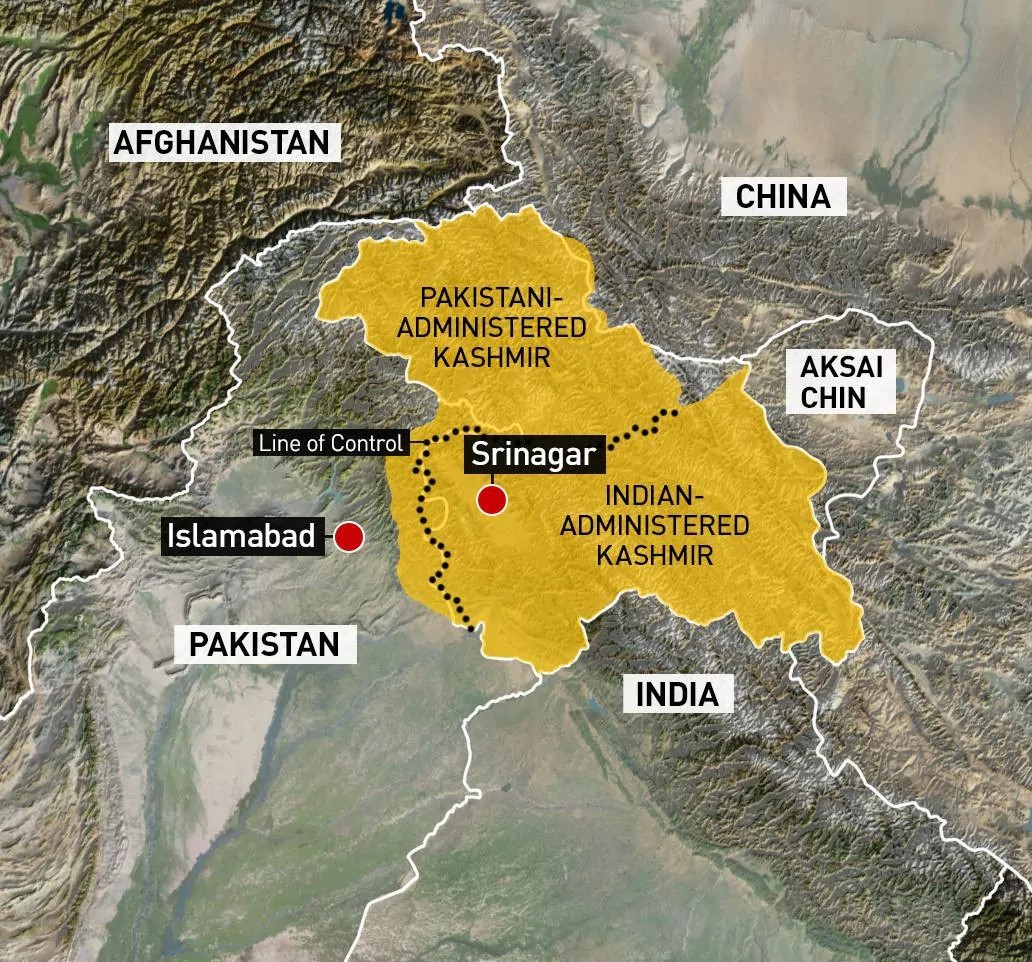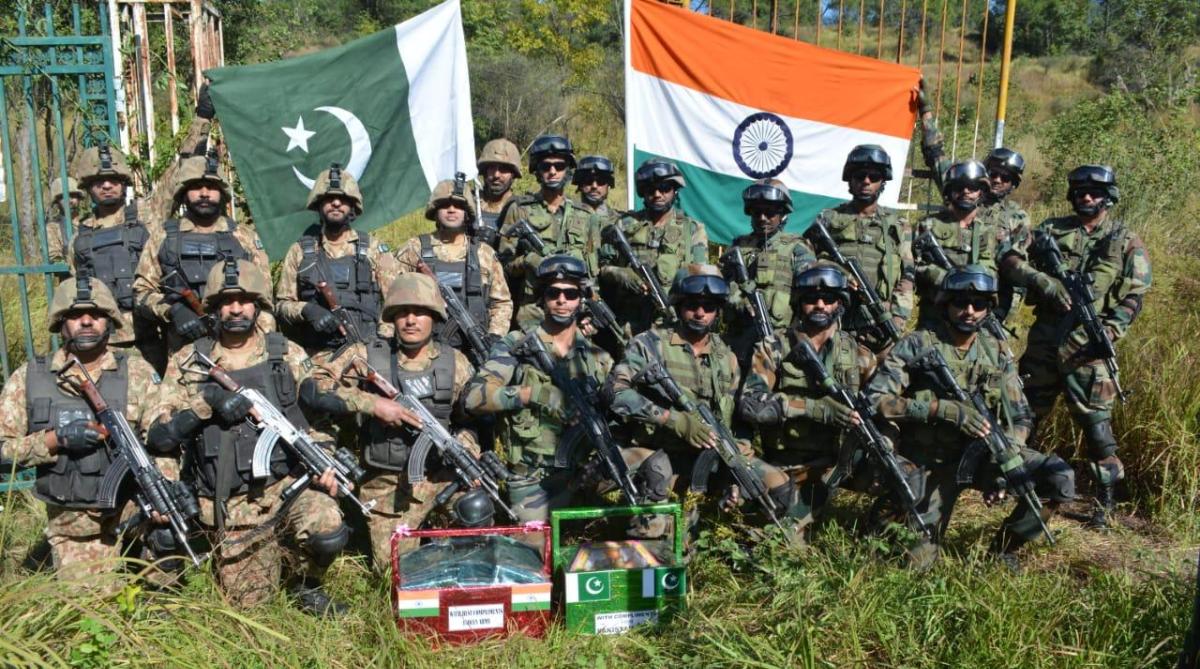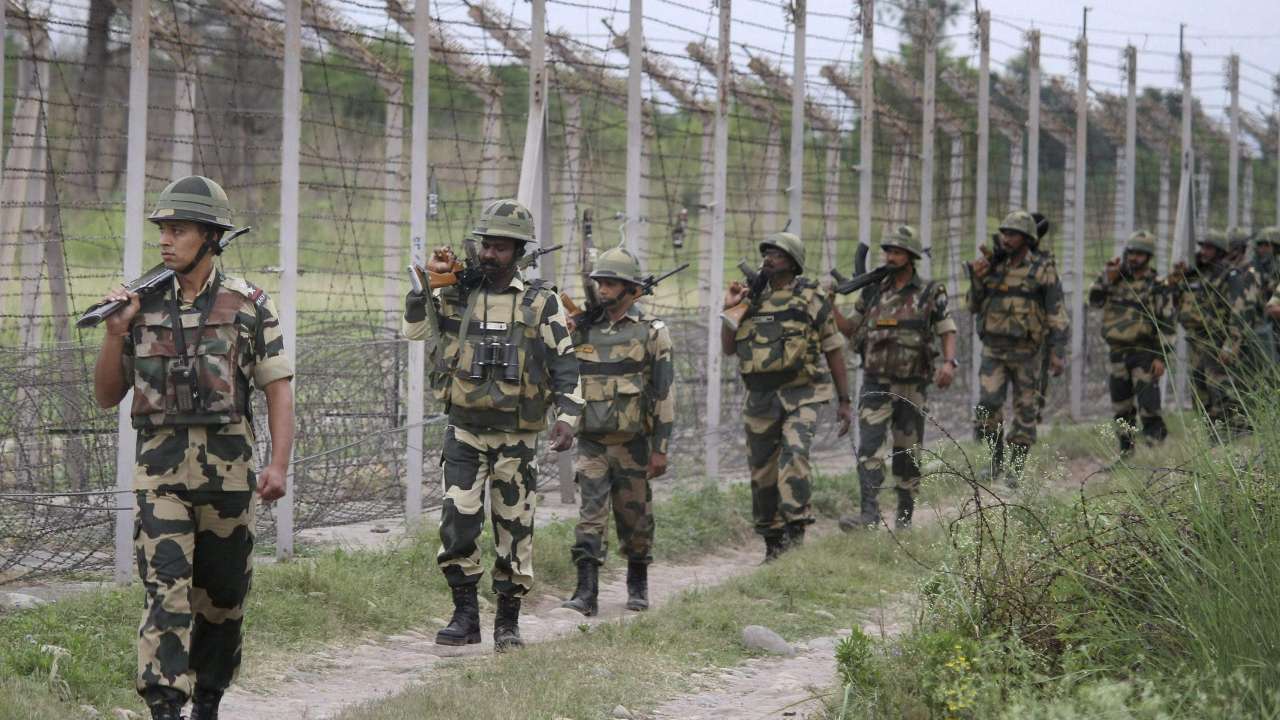India, Pakistan assents to stop all cross-border violations along the Line of Control(LOC), but with the background of attacks, is the way forward clear?

India and Pakistan released a joint statement on Thursday evening regarding the agreement to strictly condemn ceasefire along the Line of Control(LOC) and other sectors. The agreement is the outcome of several “behind the scenes” meetings over the resolute mechanism of hotline contact.
The Director-General of Military Operations or DGMOs held discussions in a “free, frank and cordial atmosphere”. Following the periods of bizarre tensions between the two nations, there seems to be a resilience of peace in the approach of both the Military Units.
“In the interest of achieving mutually beneficial and sustainable peace along the borders, the two DGMOs agreed to address each other’s core issues and concerns which have the propensity to disturb the peace and lead to violence,” the joint statement said.
“Both sides agreed for strict observance of all agreements, understandings, and cease firing along the Line of Control and all other sectors with effect from midnight of February 24/25,” the statement added.
While in the past years, undercover operations from both the Military Bases have been in full force, but there seems to be contentment within the personnel that the attacks are stalled up for the betterment of the situation.
Does the agreement resemble the pact signed in 2003? And what can be expected from the government of both the nations:
Previously, India and Pakistan had signed a ceasefire agreement in 2003, agreeing that there would be no violation of the laws and the regulations during the course of this pact. But even after this, the protocols are hardly being followed by both the military operations. Over the past several years, there have been more violations than recited in the observance of the pact.
India and Pakistan have never got along well with each other, as disputations have always been the reason for conflicts between senior Army personnel.
A question was asked in The Lok Sabha regarding the conflicts to which Union Home Minister of State for Home G Kishan Reddy replied, that a total of 10,752 cases of ceasefire violation have taken place along the Line of Control between India and Pakistan.
This is a report of the last three years, in which 72 security personnel and 70 civilians have been killed during the dreadful attacks that have hit the towns of both countries.
He asserted that around 364 security personnel and 341 civilians were injured in cross-border firings along the International Border and the Line of Control in Jammu and Kashmir in 2018, 2019, and 2020.
Reverberations of the bizarre mishappening between India and Pakistan
The riots have taken the throttle so many times that along with the government, people of both nations do not sustain cordial relationships with each other for long and have idealized an image in their minds regarding the intentions of the other person that can’t be compromised for anything.
The Director-General of Military Operations reiterated that the existing mechanism of hotline contact and border flag meetings will be utilized to resolve any unforeseen situation or misunderstanding within the ranks.

ORIGIN OF THE RIOTS, HOW DID THE DISPUTES STARTED?
The KASHMIR Problem
The Kashmir problem has been the long-standing reason for the disputes between India and Pakistan. In 1947, Pakistan was declared an independent country, and the Kashmir state which previously was entitled to the Britishers was given to India to create a state of war.
However, the partition riots broke out in Kashmir in September 1947, when Muslims were killed Western Part of Kashmir.
Sensing it as an opportunity to create disbelief against the Maharajas, Pakistan sent the Pakistan tribal armies to Kashmir which was only fifteen miles away from the state’s capital, Srinagar.
As the situation got worse, Maharaja opted for India’s assistance on the matter. At that point in time, India compelled him to sign the Instrument of accession to India.
Maharaja Hari Singh signed it and India accepted the merger of J&K to India.
All the permissions were granted, and after the completion of formalities, India sent its forces to Kashmir while Pakistan sent military aid to troops leading the Azad Kashmir Movement.
The Indo-Pak War of 1965
The disputes also mounted up due to the share of river waters. The partition of India led to confusion among the officials to cater to the distribution of the rivers.
During the time of Independence in 1947, Indus, Chenab, Sutlej, Beas, and Ravi flowed from the riverbanks of India but after partition, the situation drastically transformed. In 1948 the circulation of water from these rivers was prohibited in India. A dispute ensued within the countries and the Indus Water Treaty of 1960 signed between Jawaharlal Nehru and Ayub Khan.
The distribution led to the share of the flowing rivers. While India was granted the banks of Sutlej, Beas, and Ravi, Pakistan was furnished with the river waters of Chenab, Indus, and Jhelum at the time of Partition. What this held for the forthcoming years was unknown, as not one fraternity would have imagined such a culmination of a series of disputes between India and Pakistan.
A major concern of war came out from the religious sentiments of the community, As the Muslims felt deployed of equal faith and trust in them by the government, but that was never the case!
SCENARIO OF REFORMS IN TODAY’S WORLD
In today’s world, more Muslim reformers are getting the status that they have always wished for. India provides the freedom to every individual to express their views of opinions. Equal respect and dignity granted to the Muslim reformers have been influential in urging them to step forward in important matters of the State and Central Province.
Muslims represent India’s largest religious minority group comprising 13% of the country’s population. India has more Muslims than any other country in the world except Pakistan and Indonesia.
The minority community is growing, as the Muslims in India are more likely than Hindus and members of other religions to have three or more children below the age of 15 at home.
- Household income is particular dissemination for Muslims in India. Almost 47% of Muslims find it “difficult” to afford the necessities of life, as compared to the Hindus.
- In the past year, around 12% of Muslims insisted that they did not have enough money to buy food to accomplish adequate family needs.
Muslim Indians agree with the notion, Apart from facing some socio-economic differences, they are satisfied with the freedom they have to explore their lives according to their will and decisions.

Why do Muslims struggle to express their opinion? And Does the Conception Stand Firm?
Muslim Indians often struggle against the perception as “anti-nationalist”, which is so disappointing on our part as they have an equal judicial say in the system and should be considered like our fellow brothers.
Fellow Muslims do engage in political matters, and debates of significant national importance to express their opinion to the concerned leaders of the parties. So, the statement of not being equally treated is completely contradictory to reality.
India has a pluralist democracy where no one identity or principle is dominant. Muslims are equal in rights and freedom of speech as compared to Hindus.
Along with that, Muslims are exuberant to the tenets of democracy as other Indians, and there is no scope of discrimination based on religion. India is a sovereign and secular country where each religious sentiment is propounded and valued by every citizen of this country.
WHAT’S THE WAY AHEAD FOR RESOLVING THE CONFLICTS OF INDIA AND PAKISTAN?
The General of both the Armies insisted that there are long steps forward before achieving de-escalation and de-induction of the troops. Qamar Bajwa, Chief General of the Pakistani Army, held out his comments to the media and said that India and Pakistan will look to resolve the Kashmir issue in a “dignified and peaceful manner”.
Mohammad Yousuf has been instrumental in the developments at Islamabad, as he plays a crucial role in efforts to foster the rapprochement with India and the full power and backing from the military personnel.
The military operations stability will depend on the actions of both the countries India and Pakistan, as the maximum onus would be on Pakistan to create an environment free of terror, hostility, and violence to foster nearly neighboring countries.
Implications of the strategies adopted in recent years have showcased utter disappointments in dealing with situations calmly and peacefully. After such disastrous happenings, we can foresee some hope of encouragement in the upcoming years.

CONCLUSION
Although, rising conflicts in interest may oblige the military operations to force external pressure on the opposite government by abiding against the protocol of violation and hostility.
The cease-fire agreement enforces the military operations to abide by the rules and directions of the Government. The way to solve the problem of Kashmir should resonate with the impact that it has already had on the lives of hundreds of civilians as well as army personnel.
Throughout the intelligence community, the higher ranks are satisfied with applying no pressure in gaining an advantage over one other. The pathway ahead is difficult to sustain high-intensity violations but all the focus should be on providing a secure environment for the innocent civilians and the welfare of the nation.




